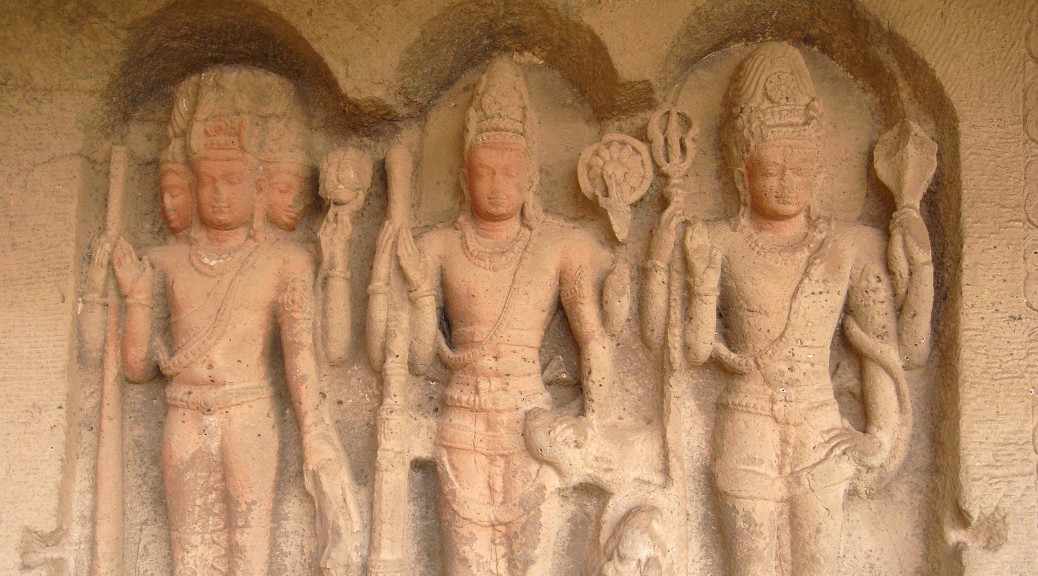In Hinduism, there is a fundamental trinity of gods – Brahma, Vishnu and Shiva. They are to be understood as birth, existence and death. They are the gods of creation, well-being and destruction, as our grandmothers told us.
Like most things in Hinduism, this trinity is also an echo from its vast philosophical underpinning. Brahma, the god of birth is not merely the god of your birth, or the creation of human beings, but also the origin of all things animate and inanimate. It is also the underlying and absolute reality behind everything that we perceive and experience. It is the monistic entity, the noumenon, of the Kantian school. The connection with noumenal reality and birth holds immense poetic beauty for me. Since the god Brahma stands for an unknowable and formless entity, it is seldom worshipped, and there are very few (if any) Brahma temples.
Vishnu, on the other hand, stands for the dualistic manifestation of Brahma. It is the phenomenal counterpart of noumenon, which is Maya. Accessible to the senses, Vishnu is also an eminently worshippable god, reincarnating in multiple forms. What Vishnu stands for from the perspective of Hindu philosophy becomes clear when they describe the world as Krishna’s leela (mischief or play). The Vaishnava temples that dot the length and breadth of India represent our acceptance of the dualistic nature of reality as we can understand it, and also, at the same time, the separateness of god from it. I fancy this is the reason why the protagonist of Herman Hesse’s Siddhartha finds himself next to a Vaishnava temple as he decides to renounce asceticism and embrace and understand the dualistic world.
Shiva is the third wheel in our dualistic understanding. I tried (in vain) to connect it to the notion of quality in Richard Pirsig’s description of reality. I attributed my ignorance and inability to understand what Shivam stood for in the trinity Satyam, Shivam, Sundaram, to the completeness of the victory of the dualistic school of thought. After all Satyam (truth) and Sundaram (beauty) are easily translated to noumenon and phenomenon, Brahman and Maya, reality and perception, light and darkness etc. But Shiva still is an elusive and mysterious entity.
Recently, I was listening to my wife practising Atmastakam – Shivoham. (By the way, she thinks her rendition is horrible and should not be made public, but I like it.) The words, as far as I could understand them, confused me. They seem to be describing what Shiva is (or, to be more precise, what Shiva is not), but they are a perfect match to my understanding of Brahma – formless, devoid of attributes, beyond right and wrong, beyond wisdom and knowledge etc. Then it occurred to me — Brahma, Vishnu and Shiva form a cycle. Where Shiva ends is where Brahma starts. After all, in the Hindu school of thought, birth follows death just as death follows birth. And, to the extent that all Hindu gods are metaphors for philosophical concepts, this must be the philosophical ink between them — tenuous though it is.

